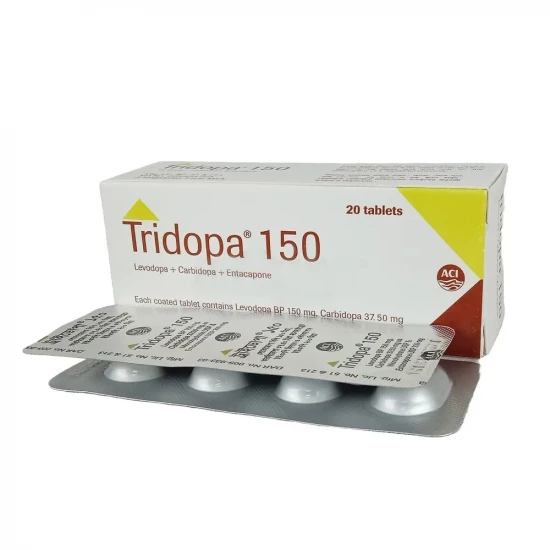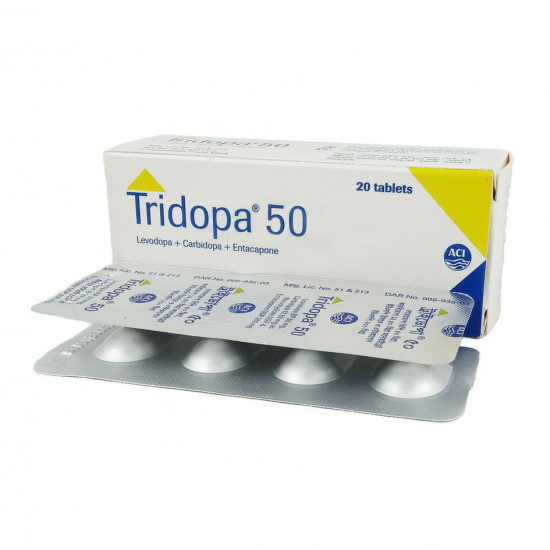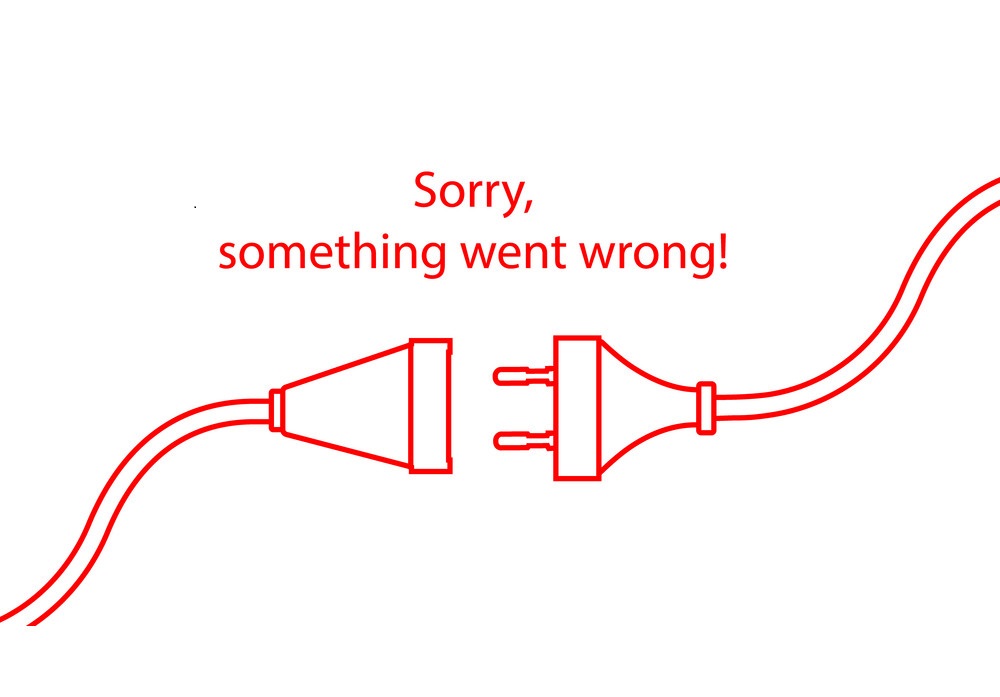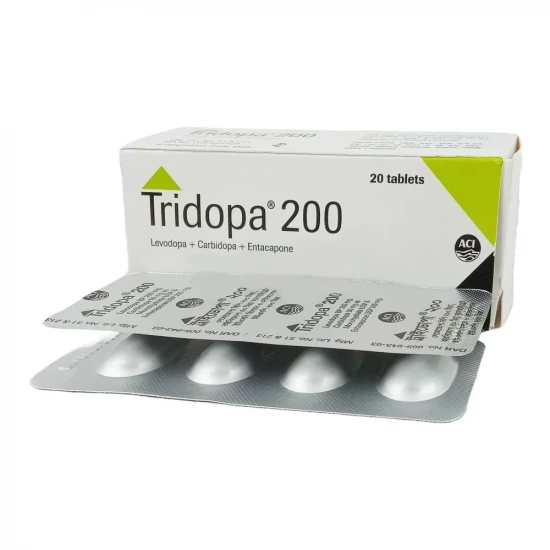
✔ 100% Authentic Product
👁️ Currently Viewing 1746
Tridopa 200mg+50mg+200mg Tablet | 1 Strip
(Levodopa + Carbidopa + Entacapone)
Tridopa is indicated for the treatment of adult patients with Parkinson’s disease who experience end-of-dose motor fluctuations and are not stabilized on levodopa/dopa decarboxylase (DDC) inhibitor therapy.
- Children: Safety and efficacy not established.
- Elderly: No specific dose adjustment needed.
- Hepatic impairment: Use with caution in mild–moderate cases.
- Renal impairment: Use cautiously in severe impairment, including dialysis patients.
Discount
Price: ৳ 151
MRP:
৳
160.48
6%
Off

100% Genuine Products, Guaranteed

Safe & Secure Payments, Always

Fast, Secure & Efficient Delivery

Proper Packaging
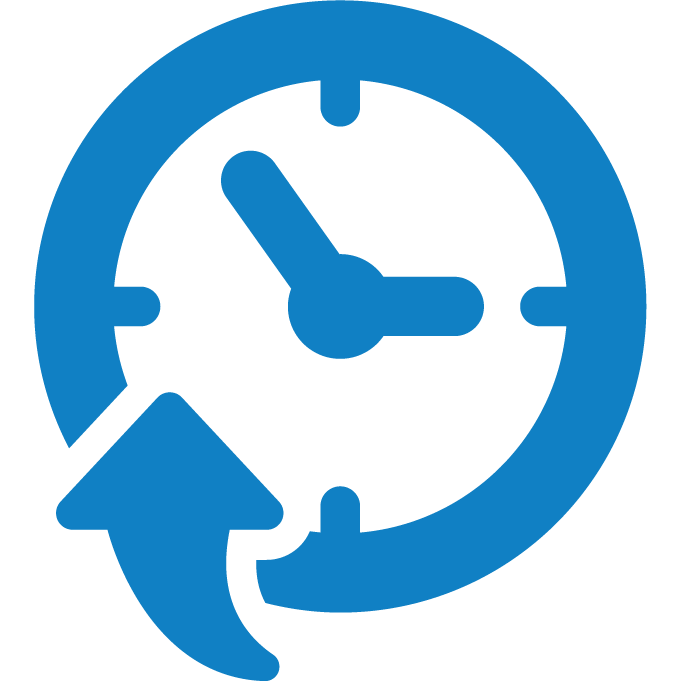 Cash on Delivery - All over Bangladesh
Cash on Delivery - All over Bangladesh Regular Delivery - 12-24 Hours, Dhaka City* Charge Tk.39-59
Regular Delivery - 12-24 Hours, Dhaka City* Charge Tk.39-59 Regular Delivery - 24-48 Hours, Other Cities* Charge Tk.99-110
Regular Delivery - 24-48 Hours, Other Cities* Charge Tk.99-110
 ফ্রি ডেলিভারিঃ - ৯৯৯ টাকা+ অর্ডারে, ঢাকা
শহরে
ফ্রি ডেলিভারিঃ - ৯৯৯ টাকা+ অর্ডারে, ঢাকা
শহরে ফ্রি ডেলিভারিঃ - ২৯৯৯ টাকা+ অর্ডারে, ঢাকার
বাহিরে
ফ্রি ডেলিভারিঃ - ২৯৯৯ টাকা+ অর্ডারে, ঢাকার
বাহিরে
100% Genuine Products, Guaranteed
Safe & Secure Payments, Always
Fast, Secure & Efficient Delivery
Proper Packaging
 Cash on Delivery - All over Bangladesh
Cash on Delivery - All over Bangladesh Regular Delivery - 12-24 Hours, Dhaka City* Charge Tk.39-59
Regular Delivery - 12-24 Hours, Dhaka City* Charge Tk.39-59 Regular Delivery - 24-48 Hours, Other Cities* Charge Tk.99-110
Regular Delivery - 24-48 Hours, Other Cities* Charge Tk.99-110 ফ্রি ডেলিভারিঃ - ৯৯৯ টাকা+ অর্ডারে, ঢাকা
শহরে
ফ্রি ডেলিভারিঃ - ৯৯৯ টাকা+ অর্ডারে, ঢাকা
শহরে ফ্রি ডেলিভারিঃ - ২৯৯৯ টাকা+ অর্ডারে, ঢাকার
বাহিরে
ফ্রি ডেলিভারিঃ - ২৯৯৯ টাকা+ অর্ডারে, ঢাকার
বাহিরে
✅ Description:
Levodopa: Dopamine precursor; crosses the blood-brain barrier and converts into dopamine to relieve motor symptoms of Parkinson’s disease.
Carbidopa: Dopa decarboxylase (DDC) inhibitor; prevents peripheral metabolism of levodopa, increasing its availability in the brain.
Entacapone: Selective catechol-O-methyltransferase (COMT) inhibitor; prolongs plasma levodopa levels and enhances clinical response.
Together, the combination provides a greater and sustained dopaminergic effect, improving control of Parkinson’s symptoms.
If therapy is stopped, switch back to levodopa/DDC inhibitor and adjust doses of other antiparkinsonian drugs as needed.
✔️ Words of Advice:
- May cause dizziness, drowsiness, or orthostatic hypotension—caution with driving or operating machinery.
- Regular monitoring of liver, kidney, blood, and cardiovascular function is recommended during long-term use.
- Monitor for psychiatric changes (hallucinations, depression).
✔️ Overdose Effects
Symptoms: Agitation, confusion, coma, bradycardia, arrhythmias, abnormal breathing, skin/mucosal discoloration, chromaturia.
Management: Supportive care, gastric lavage, repeated charcoal administration. Pyridoxine is not effective.
✔️ Dosage & Administration
The optimum daily dose must be individualized through careful levodopa titration.
One tablet = one treatment dose. Maximum daily entacapone dose: 2000 mg.
To be taken orally, with or without food. Tablets must be swallowed whole.
✔️ Patient Switching
From levodopa/carbidopa + entacapone: Switch to equivalent strength of Tridopa.
From levodopa/benserazide + entacapone: Stop benserazide at night; start Tridopa next morning with equivalent or slightly higher levodopa dose.
Patients not on entacapone: Introduce entacapone separately first in patients with high levodopa dose (>800 mg) or dyskinesia, then switch to Tridopa.
Dose adjustment: Levodopa dose may need to be reduced by 10–30% after initiation due to enhanced effect. Adjust dosing interval or strength accordingly.
✔️ Side Effects
Common: Dyskinesia, nausea, abdominal pain, diarrhea, urine discoloration
Others: Hallucinations, confusion, orthostatic hypotension, colitis, rhabdomyolysis, NMS-like symptoms, fibrosis, risk of skin cancer (melanoma)
✔️ Drug Interactions
Antihypertensives: May cause postural hypotension; dose adjustment may be required.
Dopamine antagonists (antipsychotics, antiemetics), phenytoin, papaverine: May reduce the levodopa effect.
High-protein diets: Can impair the absorption of levodopa.
✔️ Contraindications:
- Severe hepatic impairment
- Narrow-angle glaucoma
- Pheochromocytoma
- Concomitant use with non-selective MAO inhibitors (e.g. phenelzine, tranylcypromine)
- History of Neuroleptic Malignant Syndrome (NMS) or rhabdomyolysis
- Known hypersensitivity to levodopa, carbidopa, entacapone, or excipients
✔️ Pregnancy & Lactation
Pregnancy Category C: Use only if benefits outweigh risks.
Breastfeeding: Not recommended; safety unknown.
✔️ Storage
Store below 30°C, away from light and moisture.
Keep out of reach of children.
⚠️Disclaimer:
At ePharma, we’re committed to providing accurate and accessible health information. However, all content is intended for informational purposes only and should not replace medical advice from a qualified physician. Please consult your healthcare provider for personalized guidance. We aim to support, not substitute, the doctor-patient relationship.




